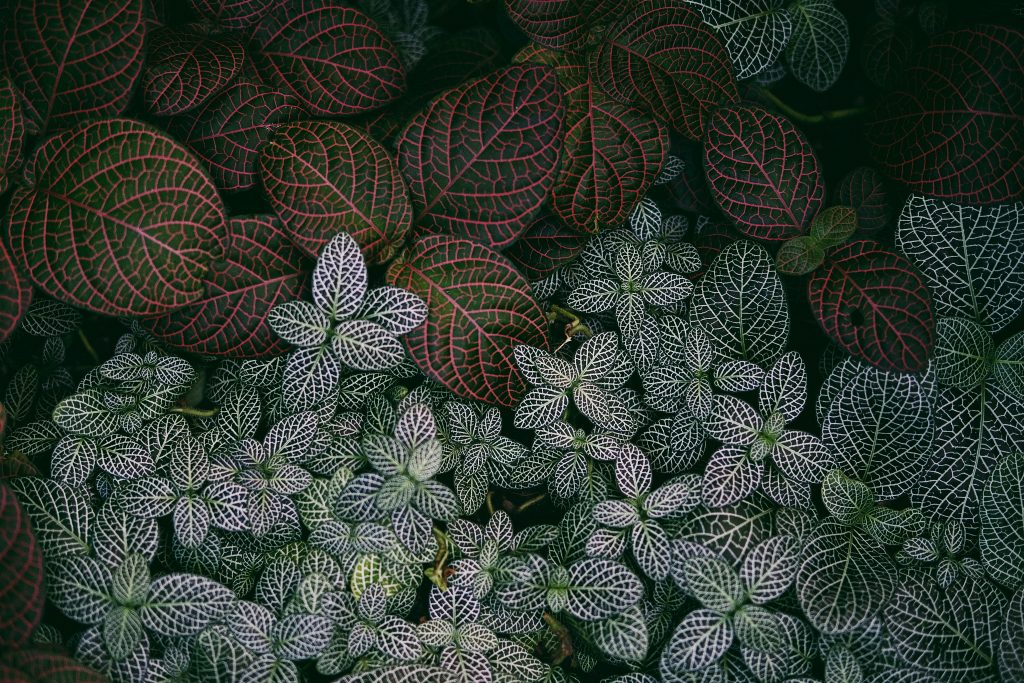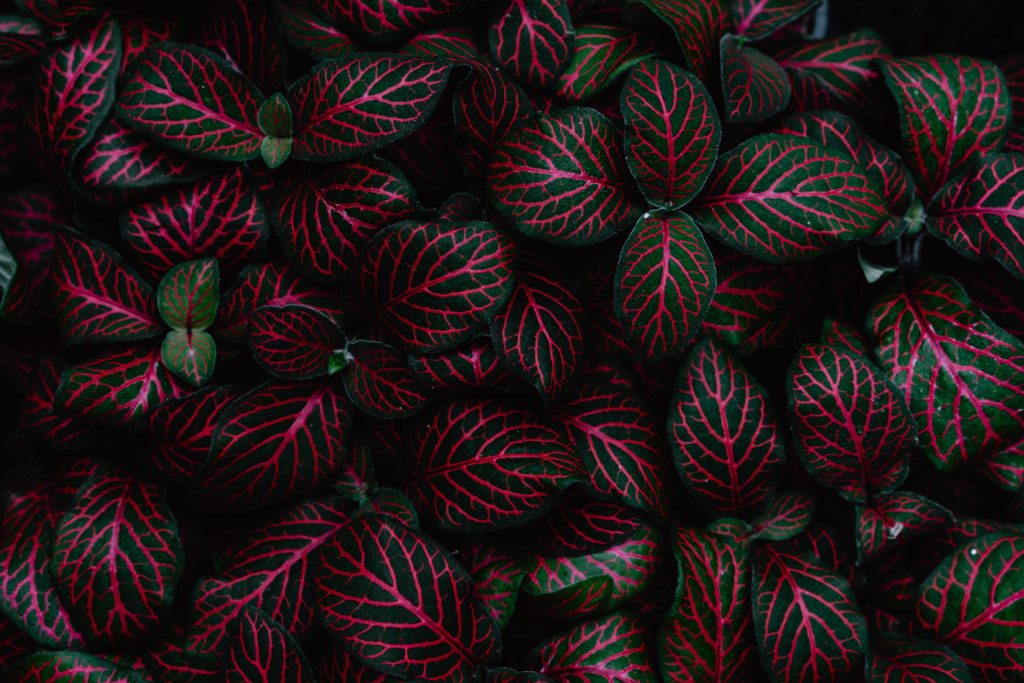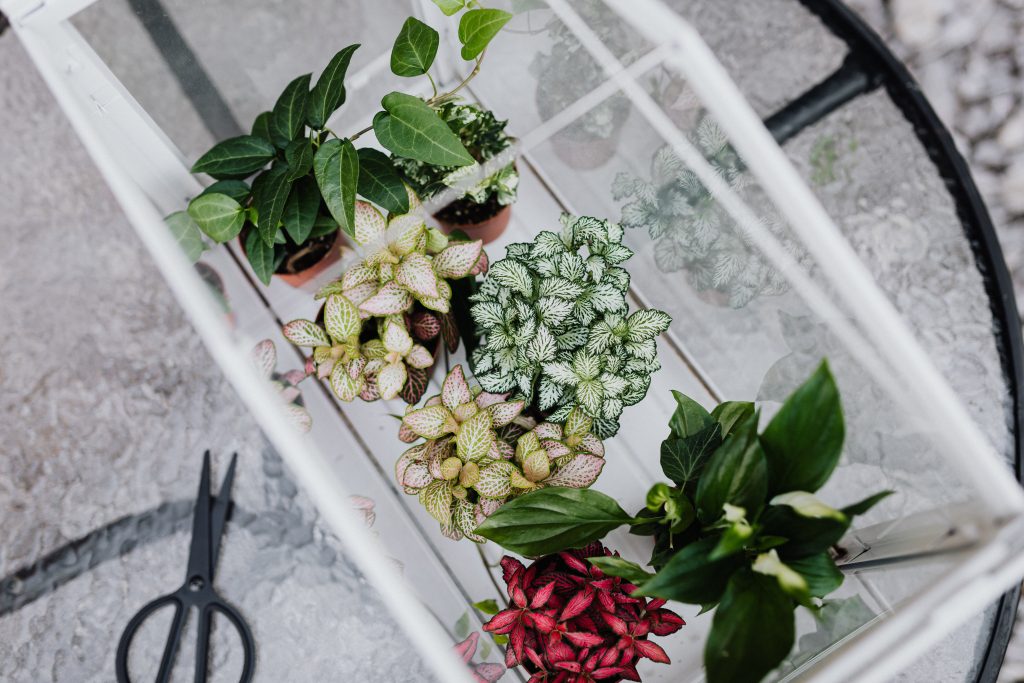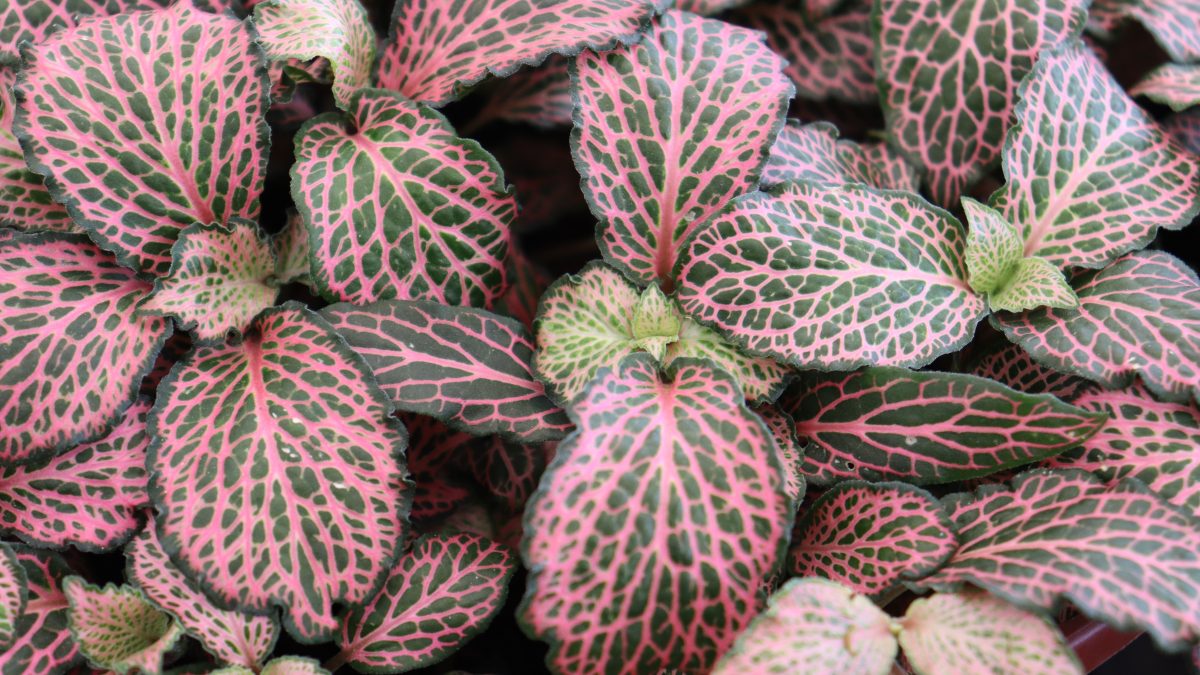The colorful leaves of fittonia make it among the most interesting houseplant varieties you can grow. Also known by the common names of the nerve plant, the net plant, and the mosaic plant, it’s easy to see why this native of tropical rainforests has become a favorite of so many houseplant growers. This article shares care information for the many varieties of fittonia available today.

While there are many large, green tropical houseplants, fittonia is adored for its compact stature (the stems reach a height of just 3-6 inches) and brilliant foliage. As far as indoor plants go, the nerve plant is one of the most visually unique. A native of South America, the foliage is a beautiful “coat of many colors”.
The leaf blades and leaf veins are different colors, making the pattern on each leaf look like a medical sketch of a mammal’s central nervous system, with a network of branching nerves running throughout (hence the common name of nerve plant). The exact color combination of the leaf blades and veins varies based on the variety of fittonia you are growing. Some have dark green leaves with white veins, others have light green leaves with pink veins. There are selections with pink leaves and green veins, and those with deep green leaves and red veins. The diversity of nerve plant colorations available is pretty stunning.
All that diversity is because there are many cultivars and hybrids of fittonia that are grown as houseplants. The primary species is Fittonia albivenis (the Argyroneura Group is silver/white veined and the Verschaffeltii Group is red veined) but there are dozens of different cultivars and hybrids.
Favorite fittonia varieties

A few favorite nerve plant varieties (many are available from Costa Farms):
- ‘Frankie’ – boasts bubblegum pink leaf blades and veins with green edges and a sprinkling of green throughout.
- ‘Pink Star’ – has small, wavy-edged leaves that are pink with a green edge when young. As the leaf matures, the space between the leaves becomes a deep green.
- ‘Ruby Red’ – green leaves with crimson striping and a green edge
- ‘Fortissimo’ – a larger plant size and has bright green leaves with soft pink veins
As a tropical plant, nerve plants prefer humid environments and warm temperatures. That, combined with their small stature, make them excellent candidates for a terrarium or bottle gardens.
Since most homes have dry air and do not provide the humid conditions fittonias prefer, place the plants on a wet pebble tray or place a small room humidifier near the plants during the winter when the air is especially dry indoors due to forced air heaters. Covering the plant with a decorative glass cloche is another option, though you’ll need to lift it from time to time for air exchange.

You’ll never quite be able to attain the high humidity levels these plants evolved in but do the best you can. Regular misting can help, too. Avoid cold air drafts and don’t place the plants near your heating ducts.
All that being said, nerve plants can certainly be grown without the use of a terrarium or humidifier. Mine is growing on a small shelf next to my kitchen sink, where moist air from cooking and dishwashing help raise the humidity. If you have a bright window in your bathroom, consider placing your fittonia plant there, where steam from showers raises the humidity, even if only for a few minutes a day.

